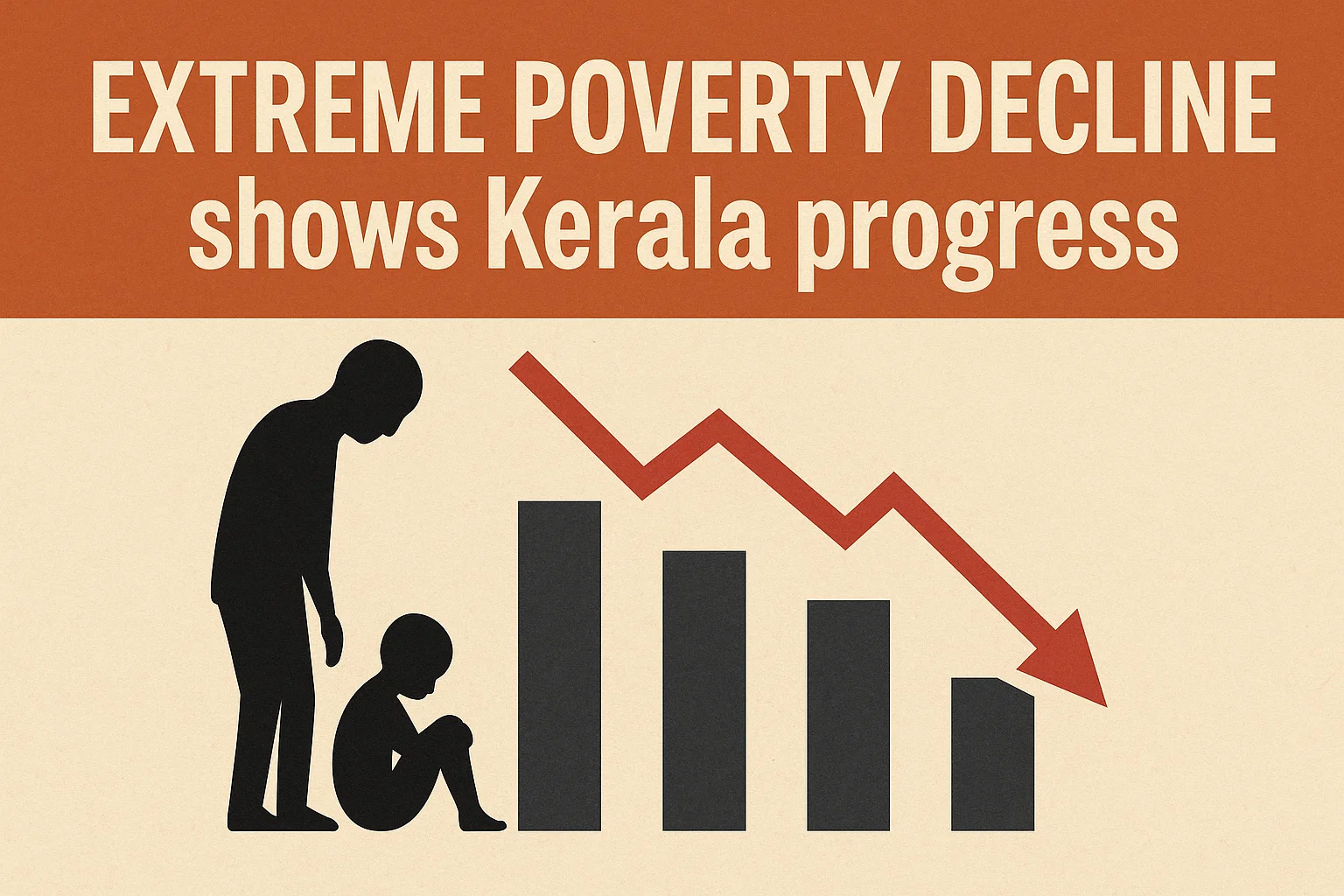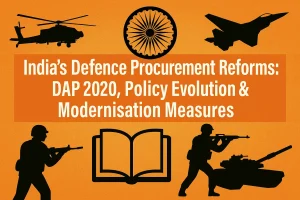Extreme Poverty Decline shows Kerala progress
Kerala’s success in eliminating extreme poverty under its 2021 Extreme Poverty Eradication Project (EPEP) showcases a rights-based, multidimensional approach to deprivation. Learn how Kerala’s model differs from traditional poverty metrics, its implementation strategy, and lessons for other Indian states battling chronic poverty.
Kerala Eliminates Extreme Poverty
Kerala’s recent claim of eliminating extreme poverty is based on its 2021 Extreme Poverty Eradication Project (EPEP), which replaced income-based metrics with a community-validated, multidimensional approach.
What is Extreme Poverty?
- Extreme poverty refers to a condition where individuals are unable to meet basic minimum survival needs such as food, shelter, sanitation, and essential healthcare.
- Unlike general poverty—defined primarily by insufficient income—extreme poverty focuses on acute deprivation of basic entitlements.
- The UN SDG 1.1 defines extreme poverty as living on less than $2.15/day (2017 PPP), but website states may adopt context-specific definitions.
- Kerala, for example, redefined extreme poverty through a rights-based, multidimensional lens, identifying families lacking minimum life-sustaining capabilities regardless of income.

How is Extreme Poverty Evaluated?
- Income-Based Benchmarks: Traditionally, extreme poverty is measured using monetary cut-offs. India’s historical benchmarks—Tendulkar and Rangarajan poverty lines—used consumption patterns to determine poverty levels. However, these underestimate deprivation when individuals lack essential services.
- Multidimensional Indicators: States increasingly rely on multidimensional measures. The National Multidimensional Poverty Index (NITI Aayog, 2021) uses ten indicators across health, education, and living standards.
- Kerala’s Extreme Poverty Eradication Project (EPEP) used a deprivation index emphasising: Secure shelter, Access to food, Healthcare access, Education, Valid documentation, Income instability.
- Community Validation: Kerala evaluated households through door-to-door mapping by ASHA, anganwadi workers, local bodies, and Kudumbashree members, ensuring high accuracy through grama sabha confirmation.
How is it Different from Poverty and Multidimensional Poverty?
- Poverty: Poverty refers to economic insufficiency—when income/consumption falls below a defined threshold. It is largely monetary.
- Multidimensional Poverty: Multidimensional poverty reflects overlapping deprivations across health, education, and living standards. India’s MPI captures ten such indicators.
- Extreme Poverty: Extreme poverty represents the lowest rung, where basic survival needs are unmet.
Differences:
| Dimension | Poverty | Multidimensional Poverty | Extreme Poverty |
| Basis | Income | Multiple deprivations | Severe life-threatening deprivation |
| Examples | Low income | No schooling, poor nutrition | No food, no shelter, no documentation |
| Visibility | Statistical | Survey-based | Ground-verified, visible deprivation |
Kerala emphasised “visible deprivation over income eligibility,” distinguishing its model.
Why Was Kerala Able to Eliminate Extreme Poverty?
- Early Social Investments: Kerala’s historically high indicators—literacy, health, women’s participation—(as reflected in Kerala Human Development Report) created a strong foundational base. Its MPI in 2023 was the lowest in India.
- Targeted Identification through EPEP: The state mobilised 14 lakh grassroots workers and conducted a participatory census, identifying 64,066 households in 1,032 local bodies.
- Household Micro-Plans: Customised micro-plans integrated housing (LIFE Mission), healthcare, food security, and livelihood support.
- Strengthening Civic Entitlements: The Aavakasam Athivegam (Rights Fast) campaign ensured Aadhaar, ration cards, voter IDs—critical for welfare access.
- Horizontal Integration of Welfare: Kerala synchronised schemes into a single household-centric system, avoiding duplication and leakages.
Major Chronic Challenges of Extreme Poverty in Other States in India
- High Informality and Seasonal Migration: States like Bihar, UP, Jharkhand face high informal employment, leading to unstable cash flows and intermittent deprivation.
- Low Human Capital Indicators: As per NFHS-5, several states lag in nutrition, literacy, immunisation—deepening multidimensional poverty.
- Weak Local Governance and Capacity: Panchayat capacity varies widely, affecting identification and service delivery.
- Poor Documentation Among the Vulnerable: Homeless populations, migrants, nomadic tribes, and manual scavengers often lack documents needed for welfare access (as noted by the Socio-Economic and Caste Census, 2011).
- Climate and Disaster Vulnerability: Drought-prone regions (Maharashtra, Rajasthan) and flood-prone regions (Assam) face recurring livelihood shocks.
Measures to Address These Challenges
- Adopt Multidimensional Identification Frameworks: States should follow Kerala’s model: combine community-based verification with deprivation indices. NITI Aayog’s MPI dataset can serve as a baseline.
- Strengthen Local Body Capacity: Training panchayats, expanding digital tools, and involving SHGs—similar to Kudumbashree—can improve outreach.
- Provide Household-Specific Micro-Plans: States must move from scheme-based to family-based service design covering shelter, nutrition, healthcare, and livelihoods.
- Universalising Civic Documentation: Mobile documentation camps, portability of welfare under One Nation One Ration Card, and migrant registries can reduce exclusion.
- Build Climate-Resilient Livelihoods: Diversification into MGNREGS-linked climate assets, agroforestry, water conservation, and skill training aligned with local conditions.
- Continuous Monitoring to Prevent Relapse: Periodic digital tracking—similar to Kerala’s—helps identify early signs of slipping back into poverty.
Subscribe to our Youtube Channel for more Valuable Content – TheStudyias
Download the App to Subscribe to our Courses – Thestudyias
The Source’s Authority and Ownership of the Article is Claimed By THE STUDY IAS BY MANIKANT SINGH




